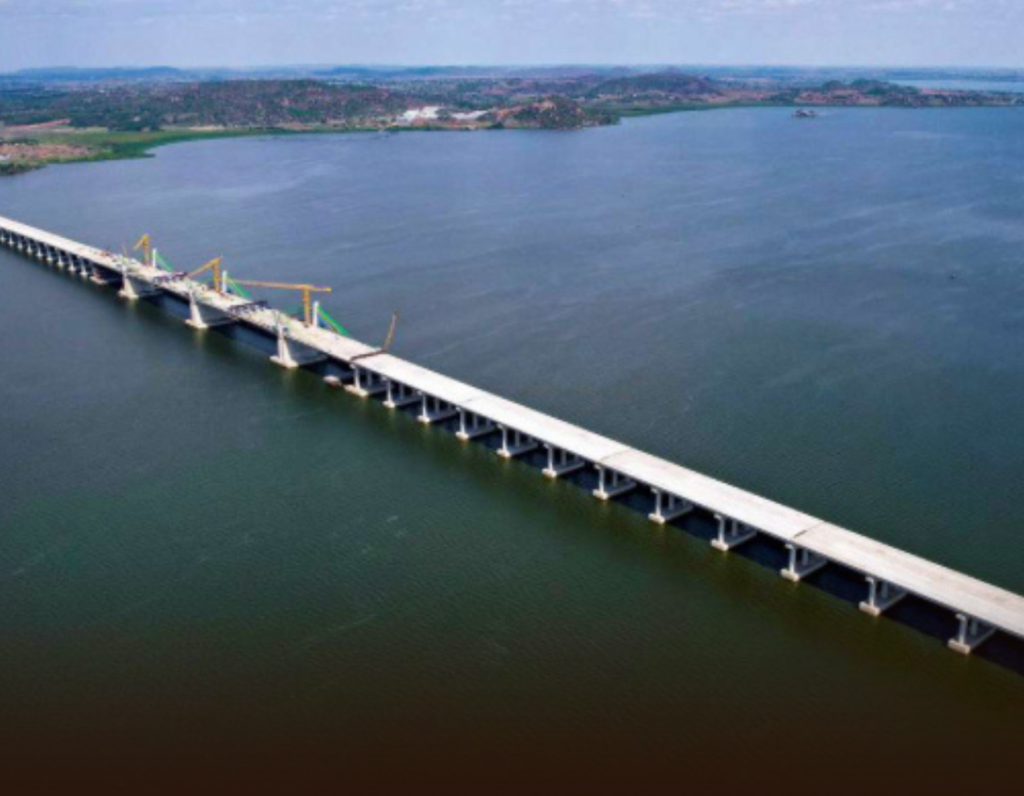A major milestone has been reached in Tanzania’s infrastructure drive as the Malagarasi Bridge, constructed by China Civil Engineering Construction Corporation (CCECC) under the Standard Gauge Railway (SGR) project, achieved full structural connection following the installation of its final precast 24-metre I-beam. The bridge spans some 433.5 metres and forms a key part of Section Six of the SGR, connecting Tanzania’s eastern and western regions.
The project team reported that 68 beams were installed under demanding geological and hydrological conditions – “frequent flooding and complex terrain” and that the operation was completed with “zero accidents and zero deviations” in line with safety and quality protocols.
This achievement paves the way for deck construction and track laying, bringing Tanzania closer to operationalising the SGR corridor. The bridge is expected to reduce logistics costs, improve freight capacity, and catalyse trade and industrial activity along the route, with the Malagarasi Bridge identified as the sole crossing of a perennial river in this section and a strategic control point.
Tanzania and China have long shared a robust strategic partnership that spans infrastructure, education, industrial development and diplomacy. Chinese construction firms have been at the forefront of landmark Tanzanian projects, including the 4.66-kilometre Magufuli Bridge over Lake Victoria, opened in June 2025 by President Samia Suluhu Hassan, which was built by CCECC and China Railway 15th Bureau. The bridge cut travel time across the lake from over two hours to five minutes and was hailed as a model of China–Africa development cooperation.
Under frameworks like the Forum on China‑Africa Cooperation (FOCAC) and the Belt and Road Initiative (BRI), Tanzania has received Chinese-financed assistance in rail, port, road, and energy infrastructure, laying the foundation for deeper manufacturing, export logistics, and connectivity growth. The new bridge forms part of this evolving narrative, signalling a shift from large-scale infrastructure alone to integrated economic corridors and value-chain development.
For Tanzania, the bridge completes a critical link in its SGR rail-road corridor, anticipated to connect Dar es Salaam to Mwanza and onward toward neighbouring countries such as Rwanda, DRC, Uganda and Burundi – thereby fostering regional trade and enhancing East Africa’s shipping access.
The bridge’s structural completion also offers concrete benefits for local communities. In adjacent regions, stakeholders expect reductions in freight delays, improved market access for agricultural produce and expanded technical employment during construction phases. One local vendor cited the shift from ferry delays to five-minute crossings as transforming their supply chain.
Nevertheless, the execution phase ahead requires sustained attention. Ensuring sufficient power supply, maintaining high standards of construction and environmental protection, and enabling effective local workforce training will determine whether this project helps Tanzania transition from infrastructure to industrialisation.
In sum, the completion of the Malagarasi Bridge stands as a visible era of China–Tanzania cooperation evolving, where structural finishing tasks signify deeper economic integration, not merely engineering achievement. For both nations, connectivity is no longer a goal in itself – it is a gateway to shared growth, regional trade and industrial transformation.





